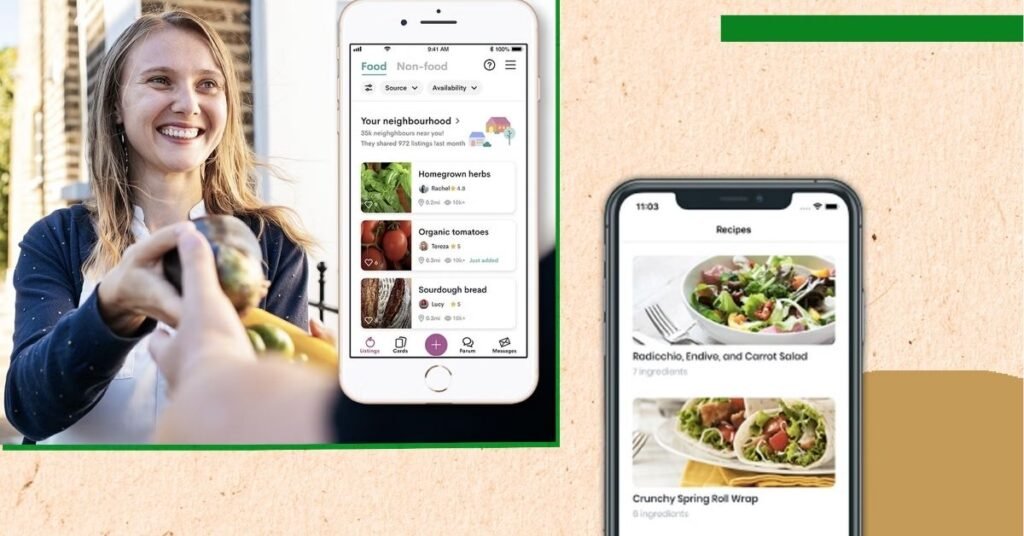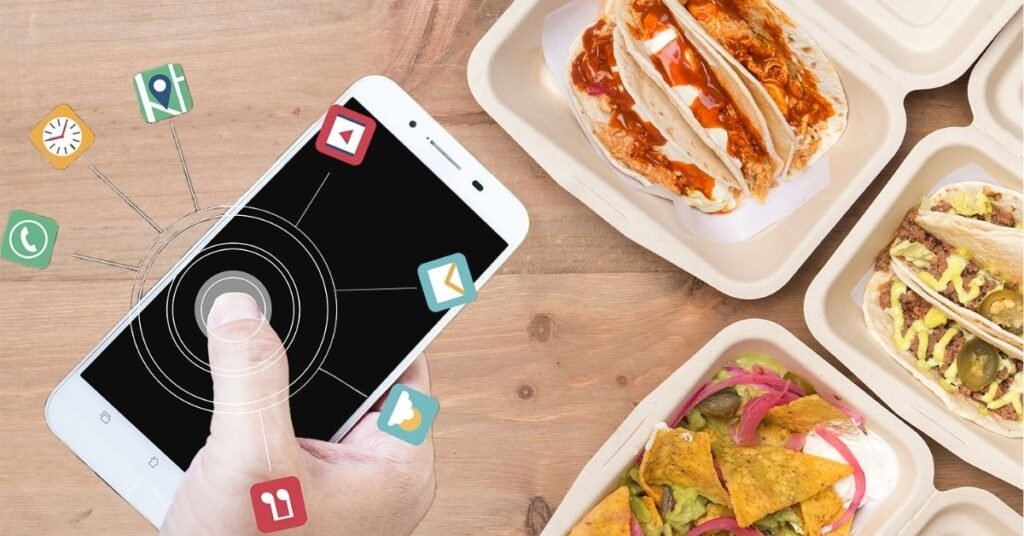Food waste is a growing problem in the United States, but technology is stepping up with solutions. The Best food sharing apps reduce waste while giving families affordable meals, helping businesses cut losses, and creating stronger community ties.
From local pick-ups to nationwide initiatives, these apps are reshaping how Americans think about food.
Features of the Best Food Sharing Apps
The Best food sharing apps reduce waste by connecting people who have extra food with those who need it.
Apps like Olio, Too Good To Go, and Food Rescue US are leading the way. They allow users to share surplus groceries, restaurant meals, or bakery items that would otherwise go into the trash. Instead of waste, food gets redistributed at low cost or even for free.
Too Good To Go, for example, partners with bakeries, coffee shops, and restaurants to sell unsold meals at discounted prices before closing time.
Olio, on the other hand, encourages neighbors to share extra pantry items or home-cooked meals. For businesses, Food Rescue US helps redirect surplus food to shelters and food banks.

These features highlight how the Best food sharing apps reduce waste while also creating savings for consumers.
Most apps also include real-time notifications, interactive maps, and ratings to make it easy to find nearby offers. Some even include subscription options for families who want consistent access to discounted food.
Release Date Rumors and New Developments
While most of the Best food sharing apps reduce waste are already available across the U.S., some companies are expanding their reach.
Too Good To Go recently announced plans to bring its services to smaller towns, not just large cities. Food Rescue US has also been working on upgrading its app to make volunteer coordination smoother.
There are also rumors about new partnerships with grocery chains. Supermarkets are beginning to embrace food sharing platforms as a way to reduce excess inventory, avoid disposal costs, and support sustainability goals.
If these expansions roll out widely, more Americans will soon have access to the Best food sharing apps reduce waste systems, even in suburban and rural areas.
Expert Opinions on Food Sharing Apps
Experts in sustainability and public health have praised how the Best food sharing apps reduce waste while addressing food insecurity.
According to the USDA, nearly 30–40% of food in the United States goes to waste every year. This waste not only hurts the environment but also comes at a major financial cost to households and businesses.
Dr. Linda Parker, a professor of environmental studies, noted that apps like Too Good To Go are “bridging the gap between waste reduction and affordability.”
She added that if more Americans embraced these platforms, the impact could be significant, cutting down greenhouse gas emissions tied to food disposal.
Restaurant owners also see benefits. By listing unsold meals at a discount, they avoid throwing away perfectly good food and attract new customers who might return later at full price.
This practical model shows why the Best food sharing apps reduce waste in ways that also benefit local economies.

Social Buzz Around Food Sharing
The rise of these apps has sparked a lot of conversation on social media. On TikTok, users post videos showing how much food they score for just a few dollars through Too Good To Go.
Instagram accounts dedicated to food sustainability highlight stories of neighbors connecting through Olio.
Reddit communities also discuss tips on finding the best deals, and users often share experiences of discovering new favorite restaurants through these apps.
Many users emphasize the feel-good aspect of rescuing food that would otherwise be tossed. The phrase “the Best food sharing apps reduce waste and fill bellies” has become common in online discussions.
The social buzz shows that these apps are not just about saving money. They are also reshaping food culture by normalizing the idea of sharing, reusing, and preventing waste.
Final Thoughts
The Best food sharing apps reduce waste by offering simple, practical tools that help both consumers and businesses.
They save money, reduce environmental damage, and support communities by making food more accessible. As more Americans become aware of these apps, their popularity is expected to grow rapidly.
At a time when inflation is squeezing household budgets and food insecurity is on the rise, these platforms provide real solutions.
Whether you’re a college student looking for cheap meals, a restaurant trying to reduce waste, or simply someone who hates throwing food away, these apps offer an easy way to make a difference.
By combining convenience with social responsibility, the Best food sharing apps reduce waste in a way that benefits everyone.
Also Read: Windows 11 Android App Resume 2025: Seamless Cross-Device Feature
4/ **Innovative Solutions in Technology**
— Curio Quip (@CurioQuip) May 25, 2025
Tech startups are developing apps to connect consumers with surplus food from restaurants and grocery stores. By facilitating food donation and sharing, these platforms help reduce waste while supporting local communities! 📱🤝

Abdul Basit is a US-based tech writer who covers Apple innovations, Tesla’s EV growth, AI breakthroughs, smartphone trends, and app reviews for global readers.
